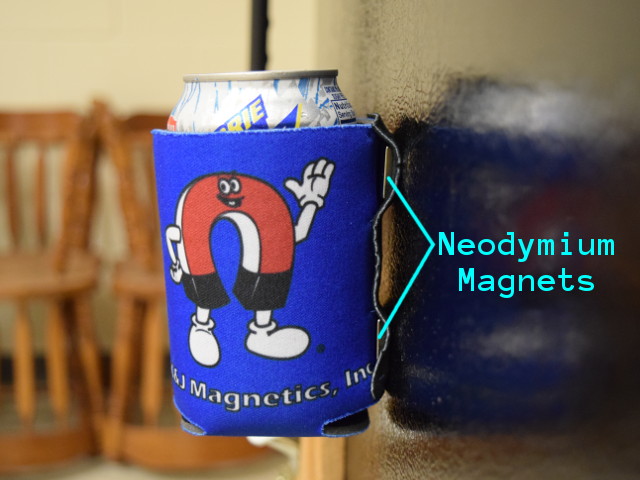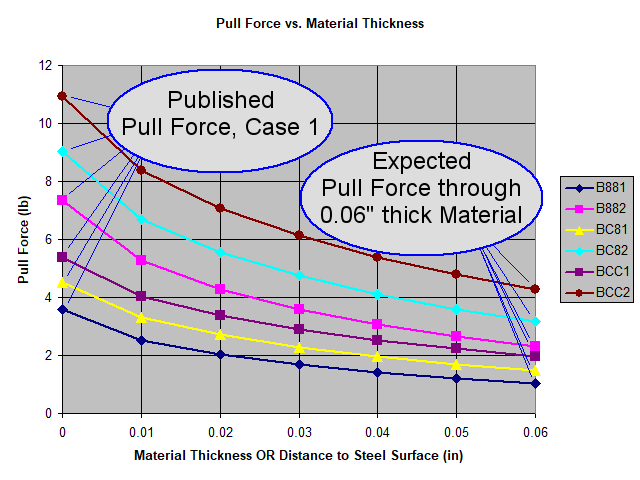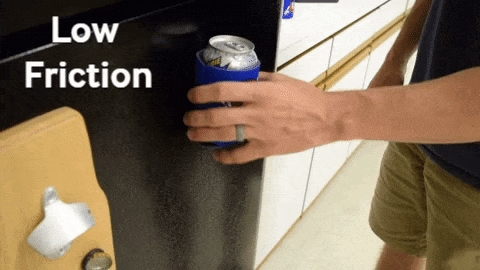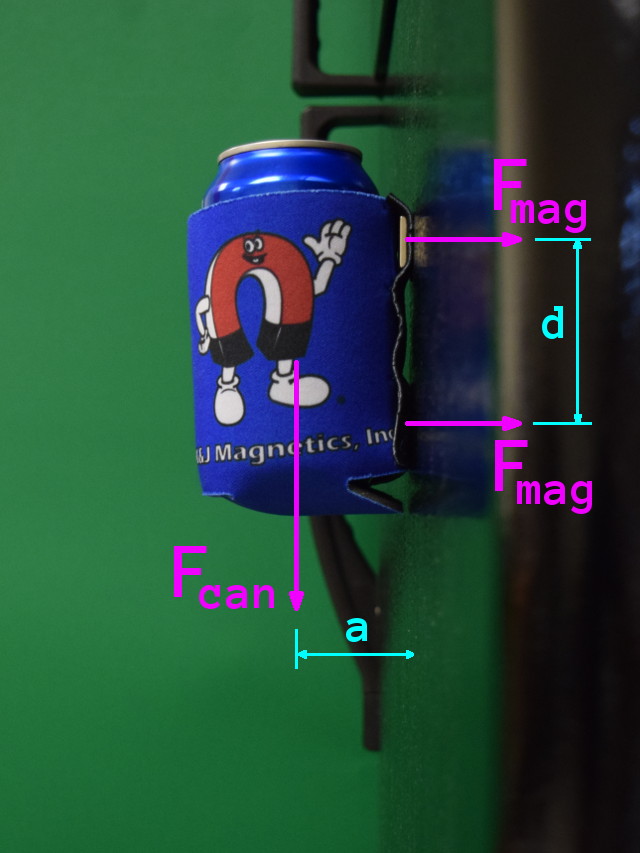Making a Magnetic Koozie
This month, we reveal how magnets can help keep your drink cool and within reach. By adding magnets to a drink koozie, we can stick our drink on many metal surfaces!
This little project started out as a silly thing to try. After actually making one and trying it out, we found it surprisingly handy! Maybe not as well-used as our Magnetic Bottle Opener or the Magnetic Knife Holder, but it will find a place.
The Idea is Simple

We set out to attach two magnets to the side of our drink koozie. We found a piece of black suede that seemed particularly grippy. Plus, it adds a little stiffness to the side with the magnets.
We sewed the strip of suede onto the koozie by hand, making pockets to insert two magnets, top and bottom. It's important to spread the magnets apart from one another as far as possible to get the most leverage.
The suede we used was about 1/16" thick. Ideally, something thinner would allow more magnetic strength from the magnets. If we found a thinner material, we might have been able to use smaller magnets to get the job done. Remember, the pull force from a magnet to your surface is going to drop dramatically as you place thicker material between the two.
The Results
We tried a bunch of magnets to get the strength just right. We wanted it to be strong enough so that it had a little, "snap to it." It should start attracting from some small distance away, so it seems to leap to the surface.
At the same time, it shouldn't be too strong. We don't want the magnets to stretch or rip the weak koozie material.
With the BCC2 block magnets we used, it felt just about right.
The Analysis
Wait a sec, aren't these magnetic blog articles usually a little more technical or educational? What is this silliness? There are a few interesting things to learn here, despite the frivolous nature of the project. These recurring themes keep coming up in the questions we receive, so the koozie seemed like a fun way to revisit them.
Takeaway #1: Material thickness matters. A lot.

The suede material we used was thicker than most fabric, but we picked it because we liked the higher friction. It doesn't slide easily. To get the most force from a given magnet size, use material as thin as possible.
Because the magnets are about 1/16" away from the surface, we expect to see much less pull force than the listed Pull Force numbers.
Takeaway #2: High friction, grippy material prevents sliding.

We used that suede material because it felt grippy on the surface of our fridge. If you use materials that aren't as high-friction, the can may slide down.
We also experimented with some of our Sewing Magnets. For a quick test, we simply stuck two magnets inside the koozie. The koozie material touched the fridge directly. It turned out to be much more slippery than the suede, allowing the can to slide down even though the magnets had a strong pull to the surface.
The magnets don't prevent sliding at all, only friction does. See How Much Will a Magnet Hold?
Takeaway #3: The distance between the two magnets provides leverage, preventing the can from tipping away from the surface.

If the magnets are too close together, even strong magnets might not have enough leverage to prevent the can from tipping away from the surface. That's because the can's center of gravity is out away from the surface, trying to rotate free.
Assume for a moment that strong friction keeps the bottom magnet from slipping. Imagine it pinned to the surface of the fridge, but free to rotate. In this scenario, the weight of the can tries to rotate the top of the can away from the surface.
The torque from the top magnet opposes the torque from the weight of the can. The greater the distance between the two magnets, the greater torque that top magnet will provide.
If the magnets are too close together, the top of the can tips away from the surface, and it falls down.


